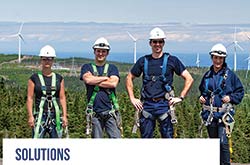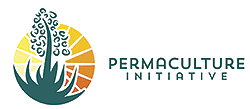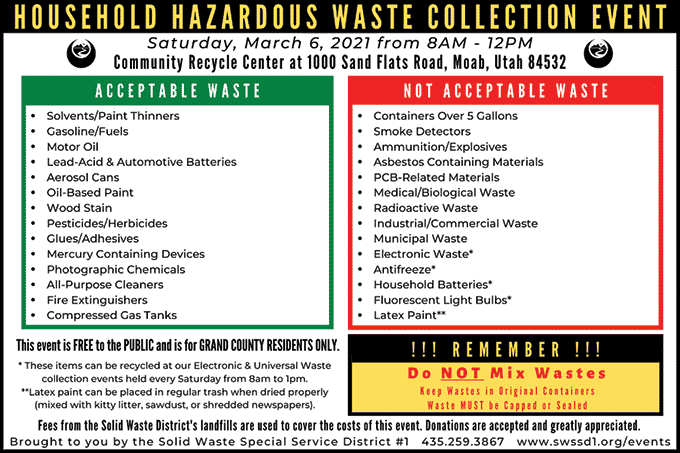 Grand County, along with two adjacent counties in Utah and handful across the Colorado border, have already warmed more than 2 degrees Celsius – double the global average. This cluster has been identified as the largest global warming hotspot in North America. We feel it, we see it, we talk about it, and yet many of us don’t necessarily know what to do about it. Grand County, along with two adjacent counties in Utah and handful across the Colorado border, have already warmed more than 2 degrees Celsius – double the global average. This cluster has been identified as the largest global warming hotspot in North America. We feel it, we see it, we talk about it, and yet many of us don’t necessarily know what to do about it.
News of the current and projected impacts of climate change abounds, but our media falls short when it comes to empowering us to engage in solutions to draw down our greenhouse gas emissions. It’s not surprising that many believe engaging in recycling or buying products labelled as “green,” “eco,” or “natural” will be enough of a role to play in the race to slow global warming.
The corporate model tends to communicate that we can buy and invent our way out of this mess. Unfortunately, some appealing options do very little when it comes to actually drawing down greenhouse gases. The good news is that groups like Project Drawdown have compiled clear solutions to drawing down carbon in our atmosphere, categorized as sources, sinks, and society. Sources include things like investing in bicycle infrastructure, bioplastics and composting. Sinks range from plant-rich diets, to reducing food waste. Society involves education around health and population control.
Each of us, including our city and county leaders, can reference the Project Drawdown framework to select the most feasible and largest impact ways of drawing down our emissions. To get us out of this hot mess, we need to engage at the individual, community, state, national, and global levels. Frankly, I feel Moab is already hot enough. Find out what you can do at https://drawdown.org/


|
Even the most seemingly innocent of items can present a danger to humans, the environment, and even infrastructure. You may not realize it but under your sink, in your garage, or a hall closet, your home could be host to several types of household hazardous waste. But what is household hazardous waste (HHW) and why is it considered dangerous? 
A waste in generally considered hazardous if it exhibits one of more physical or chemical characteristics that poses risks to human health or the environment. These characteristics include, but are not limited to, ignitability, corrosivity, reactivity, and toxicity. Many household hazardous products have one or more hazardous characteristics that require careful storage, use, and disposition; unused chemicals should not be dumped down the drain or tossed in the regular trash. Household hazardous products generally fall into five categories: automotive, cleaning and polishing, paint and related solvents, pesticides, and other miscellaneous items. Some examples of HHW are oil-based paints, automotive fluids such as antifreeze or old gasoline, pesticides and herbicides, lighter fluid, and industrial strength glues and adhesives. Use of these items for commercial purposes alters their regulatory exemptions, meaning they are no longer considered HHW, and fall under different (and more stringent) rules and regulations overseen by the U.S. Environmental Protection Agency (EPA), the U.S. Department of Transportation (DOT), the U.S. Occupational Safety and Health Administration (OSHA), and other federal and state regulatory agencies.
HHW products can cause human health and environmental harm in a variety of ways. If used incorrectly, stored without adequate ventilation, or mixed with other products, household chemicals can pose significant health and safety hazards. Improper disposal of unused HHW such as pouring chemicals down the drain, tossing them in the trash, or even burning them can result in serious adverse health hazards to humans and the environment. By dumping chemicals down the drain, they can potentially enter septic systems or wastewater treatment facilities which can ultimately find their way into a nearby water system. Septic systems and municipal wastewater facilities are not typically equipped to handle or treat harsh hazardous compounds in large concentrations. These compounds can inhibit the physical, biological, and chemical processes designed to effectively treat normal wastewater, which in return, can potentially allow them to pass through the system unchanged and permeate into waterways and groundwater.
 On the other hand, throwing out HHW with regular trash can be as equally damaging to the environment and poses substantial safety hazards to solid waste haulers and landfill employees. For example, the combination of certain chemical compounds (e.g., bleach and ammonia) can react to create toxic compounds, resulting in potential burns and exposure to toxic fumes. Additionally, rain, snow, and other precipitation can seep into landfills and promote the subsurface migration of these wastes, resulting in long-term impacts such as contaminating groundwater and surface water, harming wildlife, and negatively impacting ecosystems. On the other hand, throwing out HHW with regular trash can be as equally damaging to the environment and poses substantial safety hazards to solid waste haulers and landfill employees. For example, the combination of certain chemical compounds (e.g., bleach and ammonia) can react to create toxic compounds, resulting in potential burns and exposure to toxic fumes. Additionally, rain, snow, and other precipitation can seep into landfills and promote the subsurface migration of these wastes, resulting in long-term impacts such as contaminating groundwater and surface water, harming wildlife, and negatively impacting ecosystems.
The mantra of reduce, reuse, and recycle can be applied to HHW and there are several ways to sustainably replace these types of chemicals. Like several household cleaning products, there are alternatives that are budget friendly and safe for your whole family. For example, numerous combinations of baking soda, vinegar, and/or water can replace a variety of harmful chemical cleaners. The use of garden and lawn care items such as fertilizers and herbicides can be substituted with proper composting and mulching application. For more complicated compounds such as motor oil or degreasers, choose products that have a lower level of toxicity, can be recycled or re-refined, and purchase only what you need. By minimizing your use of hazardous products, you reduce the amount of hazardous waste your household generates. Finally, if you have HHW that you have no further use for, ask your friends and neighbors if they could make use of it before seeking out safe ways to effectively ‘dispose’ of it.
Fortunately, there is a local program available to Grand County residents to mitigate HHW hazards and safely dispose of these types of harmful products from your home. On Saturday, March 6, 2021 from 8am to 12pm at the Moab Community Recycle Center (located at 1000 Sand Flats Road), there will be a Household Hazardous Waste Collection Event – hosted by the Solid Waste Special Service District #1 (Solid Waste District). Local residents of Grand County can bring their HHW to the CRC free of charge where our HHW vendor will ensure the proper recycling, disposition, and/or disposal of unused, unwanted HHW from your home. Fees generated from the Solid Waste District’s landfills are used to cover the cost of this event, allowing for environmentally responsible recycling of products that could otherwise enter the environment or local infrastructure. However, donations will be accepted and are greatly appreciated. COVID-19 safety precautions will be in place throughout the event to ensure the safety of all attendees, Solid Waste District staff, and our HHW vendor. Solid Waste District staff will greet and direct participants during this program to facilitate safety and logistics. Please come equipped with your facemask and practice physical/social distancing at all times.
By utilizing this annual HHW management service offered to the community and making a collaborative effort to employ the use of alternative products, we can reduce our hazardous impact on the fragile desert ecosystem that we call home.
 |

 Grand County, along with two adjacent counties in Utah and handful across the Colorado border, have already warmed more than 2 degrees Celsius – double the global average. This cluster has been identified as the largest global warming hotspot in North America. We feel it, we see it, we talk about it, and yet many of us don’t necessarily know what to do about it.
Grand County, along with two adjacent counties in Utah and handful across the Colorado border, have already warmed more than 2 degrees Celsius – double the global average. This cluster has been identified as the largest global warming hotspot in North America. We feel it, we see it, we talk about it, and yet many of us don’t necessarily know what to do about it.


 On the other hand, throwing out HHW with regular trash can be as equally damaging to the environment and poses substantial safety hazards to solid waste haulers and landfill employees. For example, the combination of certain chemical compounds (e.g., bleach and ammonia) can react to create toxic compounds, resulting in potential burns and exposure to toxic fumes. Additionally, rain, snow, and other precipitation can seep into landfills and promote the subsurface migration of these wastes, resulting in long-term impacts such as contaminating groundwater and surface water, harming wildlife, and negatively impacting ecosystems.
On the other hand, throwing out HHW with regular trash can be as equally damaging to the environment and poses substantial safety hazards to solid waste haulers and landfill employees. For example, the combination of certain chemical compounds (e.g., bleach and ammonia) can react to create toxic compounds, resulting in potential burns and exposure to toxic fumes. Additionally, rain, snow, and other precipitation can seep into landfills and promote the subsurface migration of these wastes, resulting in long-term impacts such as contaminating groundwater and surface water, harming wildlife, and negatively impacting ecosystems.